Game Design Showdown
April 2010 Challenge - "The REAL Risk Game"
THIS CHALLENGE HAS BEEN COMPLETED.
Congratulations to the winner of this month's tight fight for the Game Design Showdown victory:
- Entry #2: "Drunken Strippers Ahead" by Dave Dobson (dobnarr). 22 votes (5, 5, 3, 3, 3, 3)
Followed by:
- Entry #3: "The Facility" by Nick Hayes (Black Canyon). 20 votes (5, 5, 4, 2, 2, 2)
- Entry #5: "Pantomime-onium" by simons. 14 votes (4, 3, 3, 2, 2)
- Entry #1: "Safety First!" by Tim Ponisciak. 11 votes (4, 3, 2, 1, 1)
- Entry #6: "Bad Guys Businesses" by Pastor_Mora. 11 votes (3, 3, 2, 1, 1, 1)
- Entry #4: "Conquest of Sector 74" by Scott Akkermans (scott). 3 votes (2, 1)
CRITIQUES: Post constructive critiques and commentary about the entries to this Challenge in the Critiques Thread.
Design a board game on which the icons on this image play a central role.
You can use the entire image as a board, or sets of icons as tiles, or individual icons on cards or anything you want, as long as the game is somehow focused on the icons and hazards depicted by them.
Theme: Danger, accidents, pain or any similar concept suggested by the icons. Other than that, feel free to elaborate any way you like. Humor, educational, realistic, whatever works.
Main Design Requirement:
The icons on the reference image must play an important role in the game.
Formatting Request:
Please use the GDS formatting template as a reference to format your entries before submitting. No entry will be dismissed for lack of proper formatting, but entries based on the template will be greatly appreciated. You can find a quick explanation of Markdown here.
Special Prize for the Winner:
Unless the winning game requires absurd amounts of artwork and graphic design, I'll be happy to reward the winner with my services as a professional graphic designer for free to produce a nice Print and Play version of the game.
- Start Date: Friday, 9-April-2010
- End Date: Friday, 16-April-2010, Noon US Eastern time (approximately)
- Voting: Friday, 16-April-2010 through Friday, 23-April-2010.
Comments or Questions: Comments and questions about this Challenge can be posted on the Comments Thread.
GDS Details: For more details on how these Game Design Showdown Challenges work, visit the GDS Wiki Page.
Please note, you must PM or e-mail me, seo, your GDS entry for this month. If you want to use e-mail, please PM me for my e-mail address.




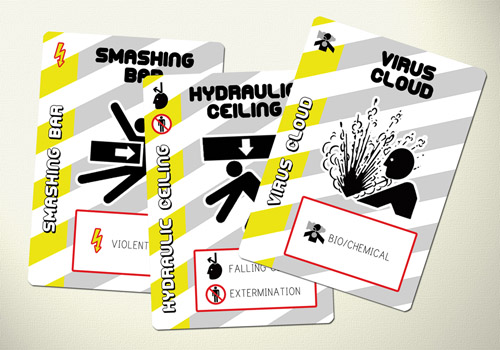

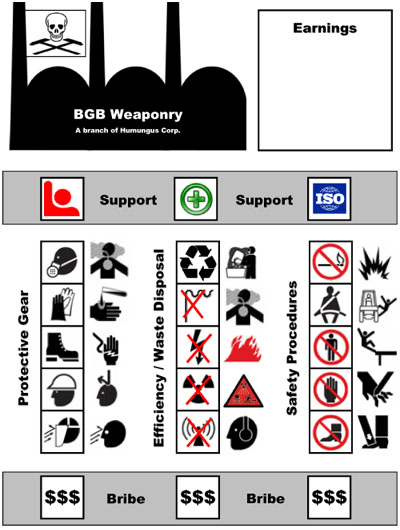
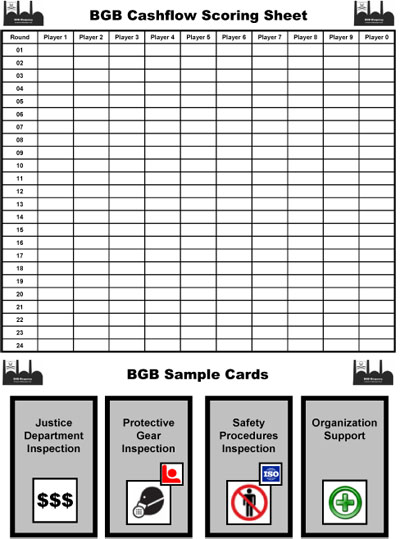
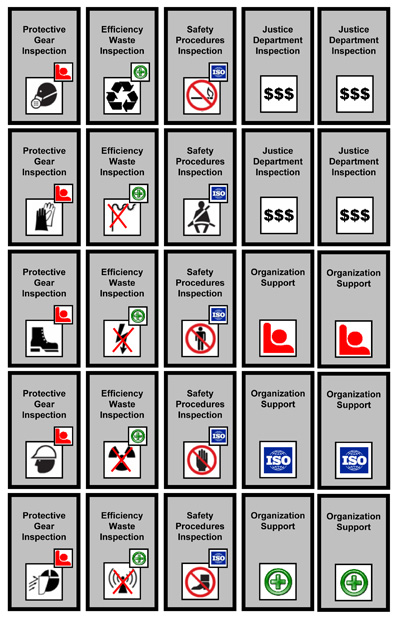

Safety First!
by Tim Ponisciak
Summary: The local car assembly factory has been having problems getting its cars completed and off the assembly line and the managers have hired a crack team of safety inspectors to go through the factory to find and fix any safety concerns. You are a member of this team of safety inspectors. It is your job to inspect the factory and find the hazards and dangers assigned to you to get this factory in tip top shape! Be the first to get all of your safety concerns fixed and you win!
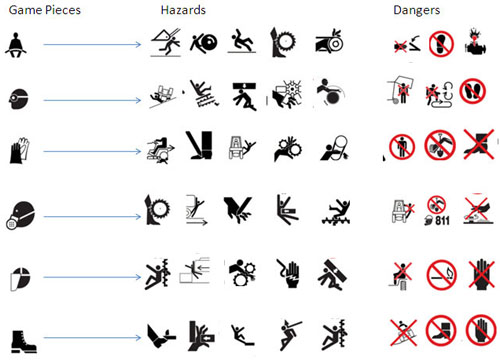
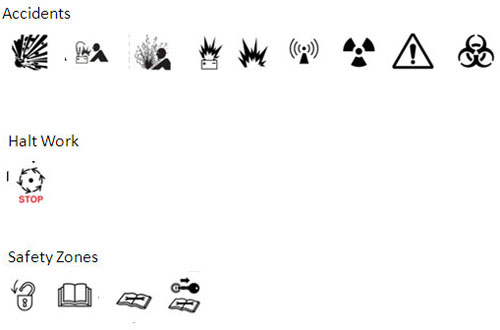

Game Mechanics: Memory
Pieces: One six-sided die, 6 Game Pieces, 30 Hazard cards, 18 Danger cards, 9 Accident cards, 1 Halt Work card, 4 Safety Zone cards, game board.
Instructions